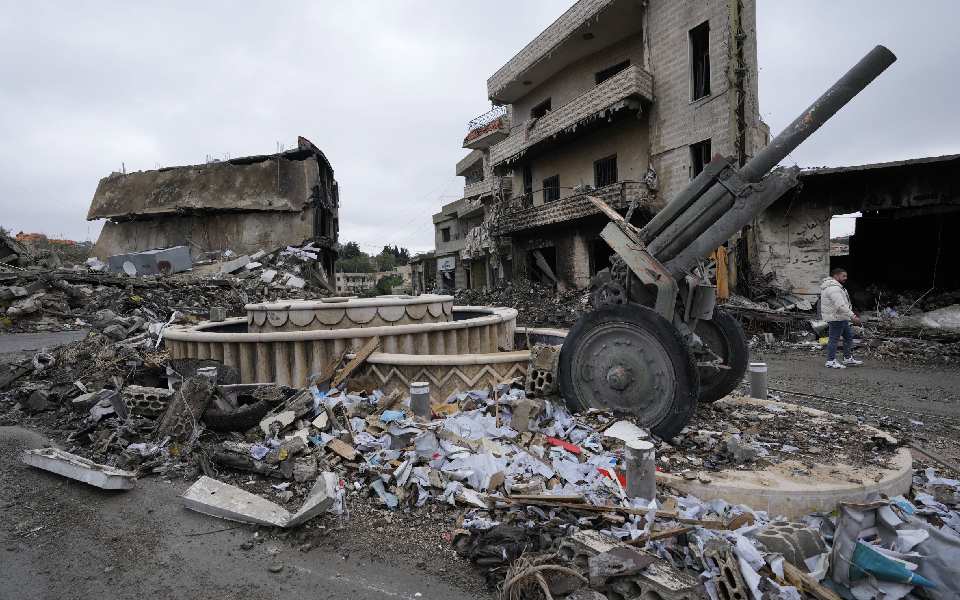New Delhi (PTI): A depression that originated over central India is expected to bring heavy to extremely heavy rainfall in Uttarakhand, Delhi, parts of Uttar Pradesh, Rajasthan and Madhya Pradesh over the next two to three days, the India Meteorological Department (IMD) said on Thursday.
According to the latest IMD update issued at 8:50 am, the system was located near Gwalior, around 50 kilometres north of the city and 60 kilometres south-southeast of Agra. It is expected to continue moving towards the north-northeast direction over the next 24 hours.
The IMD said Uttarakhand is likely to experience light to moderate rainfall from September 12 to 14, with heavy to extremely heavy rainfall in isolated areas.
Haryana and Delhi are expected to see light to moderate rain, with heavy rainfall at times between September 12 and 15.
East and west Uttar Pradesh may experience heavy to extremely heavy rainfall during this period.
In Madhya Pradesh, heavy rainfall is expected on September 12, followed by moderate to heavy rain over the next few days.
West Rajasthan could experience heavy rainfall on September 12, and east Rajasthan may receive heavy to very heavy rainfall on September 12 and 13.
Rainfall measuring between 64.5 mm and 115.5 mm is considered "heavy", between 115.6 mm and 204.4 mm "very heavy", and above 204.5 mm "extremely heavy".
Winds gusting up to 55 kmph are predicted for parts of north Madhya Pradesh, west Uttar Pradesh, Haryana and Delhi over the next 24 hours.
The weather department warned of moderate to high risk of flash floods in several areas, particularly in parts of west Uttar Pradesh, east and west Madhya Pradesh.
Surface runoff and flooding may occur in low-lying, fully saturated areas due to the rainfall, the IMD said.
The heavy rainfall could trigger localised flooding of roads, waterlogging in low-lying areas, and the closure of underpasses, especially in urban regions, it said.
Traffic disruptions are likely due to waterlogged roads, and visibility may be reduced in some areas. Minor damage to kutcha (unpaved) roads and vulnerable structures is possible, along with landslides and damage to crops due to the rain and wind, the IMD said.
Let the Truth be known. If you read VB and like VB, please be a VB Supporter and Help us deliver the Truth to one and all.
Beirut, Nov 28: The Israeli military on Thursday said its warplanes fired on southern Lebanon after detecting Hezbollah activity at a rocket storage facility, the first Israeli airstrike a day after a ceasefire between Israel and Hezbollah took hold.
There was no immediate word on casualties from Israel's aerial attack, which came hours after the Israeli military said it fired on people trying to return to certain areas in southern Lebanon. Israel said they were violating the ceasefire agreement, without providing details. Lebanon's state-run National News Agency said two people were wounded.
The back-to-back incidents stirred unease about the agreement, brokered by the United States and France, which includes an initial two-month ceasefire in which Hezbollah members are to withdraw north of the Litani River and Israeli forces are to return to their side of the border. The buffer zone would be patrolled by Lebanese troops and UN peacekeepers.
On Thursday, the second day of a ceasefire after more than a year of bloody conflict between Israel and Hezbollah, Lebanon's state news agency reported that Israeli fire targeted civilians in Markaba, close to the border, without providing further details. Israel said it fired artillery in three other locations near the border. There were no immediate reports of casualties.
An Associated Press reporter in northern Israel near the border heard Israeli drones buzzing overhead and the sound of artillery strikes from the Lebanese side.
The Israeli military said in a statement that “several suspects were identified arriving with vehicles to a number of areas in southern Lebanon, breaching the conditions of the ceasefire.” It said troops “opened fire toward them” and would “actively enforce violations of the ceasefire agreement.”
Israeli officials have said forces will be withdrawn gradually as it ensures that the agreement is being enforced. Israel has warned people not to return to areas where troops are deployed, and says it reserves the right to strike Hezbollah if it violates the terms of the truce.
A Lebanese military official said Lebanese troops would gradually deploy in the south as Israeli troops withdraw. The official spoke on condition of anonymity because they were not authorized to brief media.
The ceasefire agreement announced late Tuesday ended 14 months of conflict between Israel and Hezbollah that began a day after Hamas' Oct. 7, 2023 attack out of Gaza, when the Lebanese Hezbollah group began firing rockets, drones and missiles in solidarity.
Israel retaliated with airstrikes, and the conflict steadily intensified for nearly a year before boiling over into all-out war in mid-September. The war in Gaza is still raging with no end in sight.
More than 3,760 people were killed by Israeli fire in Lebanon during the conflict, many of them civilians, according to Lebanese health officials. The fighting killed more than 70 people in Israel — over half of them civilians — as well as dozens of Israeli soldiers fighting in southern Lebanon.
Some 1.2 million people were displaced in Lebanon, and thousands began streaming back to their homes on Wednesday despite warnings from the Lebanese military and the Israeli army to stay out of certain areas. Some 50,000 people were displaced on the Israeli side, but few have returned and the communities near the northern border are still largely deserted.
In Menara, an Israeli community on the border with views into Lebanon, around three quarters of homes are damaged, some with collapsed roofs and burnt-out interiors. A few residents could be seen gathering their belongings on Thursday before leaving again.





